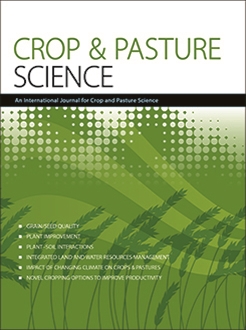Context. Crop production is one of the agricultural sectors most vulnerable to climate change. In order to minimise risks, innovative technologies and management strategies are continually being developed. Early sowing is a strategy used in wheat production; however, with irregular rainfall patterns, false breaks can occur.
Aims. We sought to determine the optimal volume of autumn-break rainfall for the start of season, and whether formation of a larger rhizosheath (i.e. the thick layer of soil adhering to roots) can buffer wheat seedlings from false-break conditions, thereby keeping plants alive until the next rainfall.
Methods. In glasshouse experiments, six varieties of common wheat (Triticum aestivum L.), two with contrasting rhizosheath-forming ability and the other four untested, were grown on two soil types (Kandosol and Vertosol) under simulated autumn-break rainfall and false-break durations. Rhizosheath size and plant establishment traits were measured.
Key results. The ability to form large rhizosheaths explained ~80% of the variability in crop establishment under various scenarios of false-break conditions. Comparative growth performance of the cultivars forming the largest (cv. Flanker) and smallest (cv. Westonia) rhizosheaths showed that they were largely similar for the first 28 days of drought but differed significantly thereafter. Flanker was progressively better able to establish as false-break duration increased and showed significantly greater tiller and leaf production than Westonia.
Conclusions. We demonstrate that genotype selection for formation of large rhizosheaths can help to reduce plant seedling death under false-break conditions.
Implications. Although the amount of starting rainfall is critical, cultivars differ significantly with regard to how far they can develop without follow-up rain. Future research is suggested for a field-scale study of the potential for selection for larger rhizosheaths to improve wheat crop establishment under harsh conditions.






